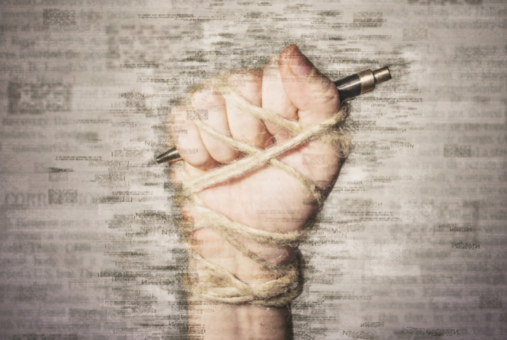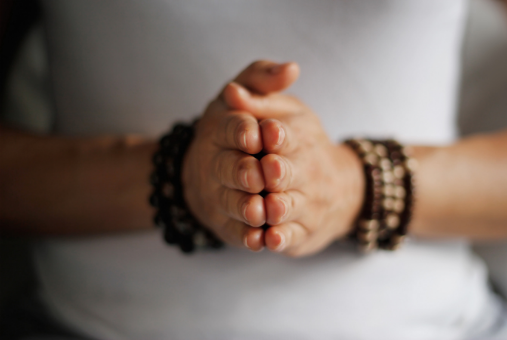Mexico and Brazil are annually at the top of global rankings of violence against journalists and impunity resulting from these attacks. This environment ends up having impacts on the mental and physical health, and personal and professional lives, of journalists. A recently published study revealed how journalists in both countries deal with the stress resulting from risky experiences in the profession, and how these experiences are connected to structural issues that affect the field of journalism.
The article entitled “Risk, Victimization, and Coping Strategies of Journalists in Mexico and Brazil” features the results of a study carried out by researchers from the United States and Brazil, with the participation of 21 journalists from Mexico and 33 from Brazil.

Study co-author Laura Iesue of the University of Miami (Courtesy)
These professionals answered an anonymous online questionnaire in which they described a situation they experienced at work during which they believed their physical or emotional integrity was in jeopardy. They also described their feelings during this experience and the subsequent adverse reactions. And they were asked about the emotional support they had and how it helped to cope with that situation.
“Journalists are constantly at risk from repeated exposures to traumas based on the topics they report upon, and the events they experience both in the field and in the newsroom,” Laura Iesue, doctoral student at the University of Miami and one of the authors of the study, told LatAm Journalism Review (LJR).
She noted that while the precariousness that journalists face can be attributed to structural issues such as changes to the labor market and a weak rule of law, “no [academic] work has really sought to link these experiences to these greater structures.”
“In addition, little work has sought to link these experiences to the coping strategies journalists use in their everyday lives,” she said, adding that “while linking victimization to greater macro-related structures is certainly important in this discussion, we also wanted to take the time to shed some light on the coping, and ultimately, resiliency of so many of these journalists.”
Experiences of victimization
The survey heard from journalists working in specific regions: Tamaulipas, in northeastern Mexico, and Acre, in northern Brazil, are two border regions where professionals are the target of violence, especially from organized crime; and Puebla, in south-central Mexico, and Minas Gerais, in southeastern Brazil, are two regions that are “economically in the top quartile of their countries,” and where pressure against journalists comes especially from political actors, according to the study.
Most participants in the four regions reported experiences of intimidation or physical aggression perpetrated by criminals, police officers or politicians, which the researchers classify as risks related to a weakrule of law in both countries.
“Threat” and “intimidation” were the words most mentioned by journalists working in Acre, according to the study. They named drug and arms traffickers operating in the Amazon River as the main perpetrators of aggression against professionals in the region. Journalists from Minas Gerais and Puebla also named police and politicians responsible for threats and attacks. Professionals in Tamaulipas said they were targeted by organized crime; there was a report of a gunshot and grenade attack on a newsroom and a report of a beating that resulted in the loss of an eye.
Victimization experiences connected to precariousness in the job market or in the workplace were most reported by journalists in Brazil.

“In these contexts, journalists often discussed working in hostile work environments, and even having income precarity due to their work environments,” Iesue said.
Experiences of “culturally motivated risks,” like aggressions by political and social actors moved by “ideologically based distrust of the media,” also appeared more often in Brazil, with reports of aggression during the coverage of demonstrations, for example.
According to the study, “respondents frequently recalled the period leading up to and after Bolsonaro’s election as one of the most stressful times in the newsroom.” Brazil's current president, Jair Bolsonaro was elected in 2018 and has maintained his violent rhetoric against journalists since the election campaign.
Also in the two regions of Brazil and in Puebla, reports of threats based on discrimation of gender or identity were identified, with women reporters telling about experiences of sexist harassment and online attacks.
As a result of these experiences, journalists reported having felt “helpless, humiliated, indignant, anxious and afraid and vulnerable, distressed, discouraged, angry.”
These and other emotions manifested for some as physical symptoms such as heart palpitations, excessive tiredness, insomnia, headache and stomach problems. Some journalists said they had panic attacks.
Coping strategies
“The stories that journalists shared regarding their victimization stories were shocking,” Iesue said. “However, I think what most stands out to me in this study is the coping strategies utilized by journalists and how this often varied based on context, much like risks and victimization types varied.”
The majority of journalists interviewed reported having made or used adaptive strategies such as leaving their job to move to a better work environment, changing news beats or practicing self-censorship as a precautionary measure. Other reported strategies were sharing experiences with colleagues for emotional support, as well as individual activities such as meditating, exercising, and writing poetry.

Some journalists reported using collective coping strategies, such as working with civil society organizations, joining colleagues to demand better working conditions, and reporting collaboratively. Professionals in Minas Gerais and Puebla reported using these collective strategies the most, while journalists in Tamaulipas and Acre tended to report more individual strategies, such as seeking security training on their own and self-censorship to protect themselves, avoiding covering certain topics, for example.
The study authors consider that this distinction between more collective and more individual coping strategies is perhaps the most pertinent finding of the research. Also noteworthy is its variation based on the region where each type of strategy was most prevalent.
“Unfortunately, we never asked journalists why they engaged with a certain coping behavior while choosing not to engage in others,” Iesue lamented.
The authors suspect that “within Tamaulipas, journalists may have a general distrust that collective action would not provide an acceptable response from the government or their employers,” they wrote in the study.
Another possibility they raised is the distrust even of colleagues, since organized crime groups pay and coerce journalists to be their informants about what happens in newsrooms.
“Perhaps because journalists in Puebla were not experiencing the extremes that journalists in Tamaulipas faced, they might be more willing to at least have some form of collective organization even if it is not done using formal organizations or institutions,” Iesue said.
As for this distinction in Brazil, the researcher speculates that perhaps “the resources for collective action” are not available in Acre as they are in Minas Gerais, where this type of coping strategy was most reported by journalists.
“It could also be that based on where they are located that they are facing similar situations as seen in Tamaulipas, which is resulting in a lack of trust to organize,” she suspects.
Iesue commented that, at first, the researchers thought of classifying the more collective coping strategies – involving civil society organizations and organized groups of journalists, for example – as more adaptive, and the more individual coping strategies – such as self-censorship – as maladaptive.
“Considering that censorship can limit media’s ability to inform the public and thus can be a hindrance to democracy, I first saw censorship as being maladaptive – a bad thing,” she said. “However, if we consider the context in which these journalists are reporting, censorship is essentially a safety measure – thus really a good thing, and probably an adaptive coping strategy for survival! If they didn’t censor their work they may be fired, experience more harassment, be physically hurt or even killed in the worst of cases.”
Iesue said she would like there to be “more collective organization for journalists, and that journalists were better protected from a variety of actors and negative experiences.”
“I especially wish that these guaranteed protections would come from the State. However, the political climate, how society views and treats journalists, and various other contextual factors really determine whether this is possible.”
The researcher, who is in the area of international sociology and criminology, said that her colleagues and she intend to expand this research “in whatever ways possible.”
“Unfortunately, in my field, the risks, violence, and everyday experiences journalists face are not as actively discussed as they are in the field of journalism. I hope I can change that,” she said. “In the future, I’m hoping to expand this line of work to study the victimization and coping of journalists in Guatemala, and in other locales in Central America.”